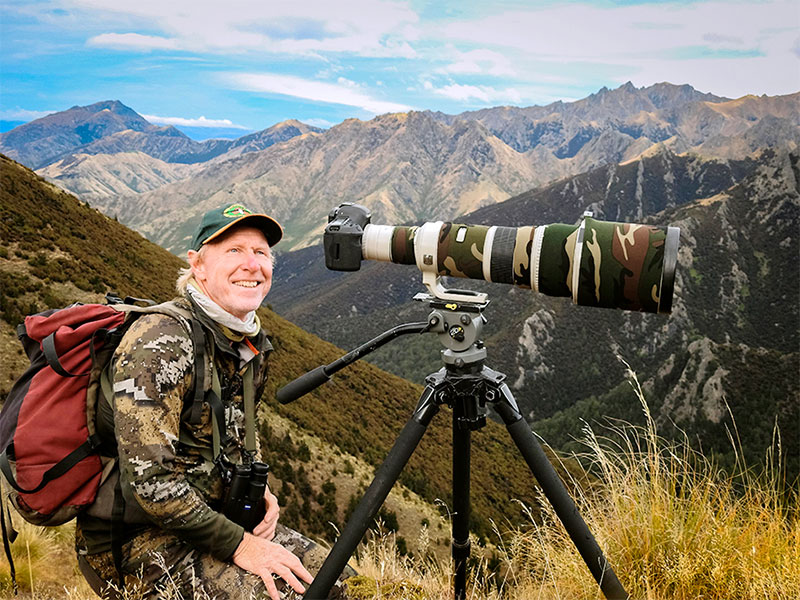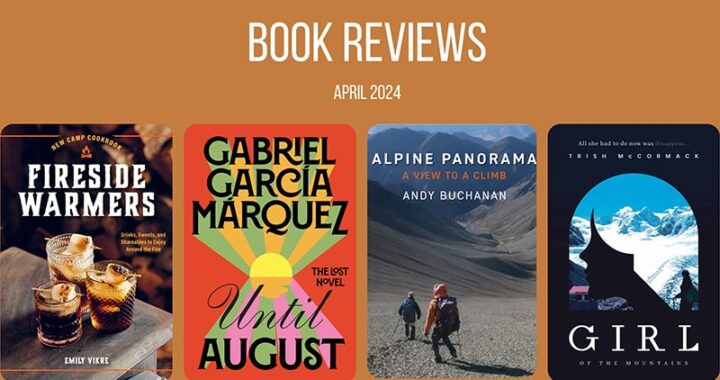In focus: Steve Couper
7 min read
Shooting success – Steve Couper at Glen Dene Station (Lake Hawea). Photo: Supplied
As a nature enthusiast with a knack for capturing sharp images, wildlife photographer Steve Couper is living the dream, dedicating his days to doing what he loves most. A fascination with animals and the natural world has followed him his whole life. However, hunting for the best shot took on a new meaning while at high school, where time spent experimenting with dark rooms and different styles of printing sparked Steve’s passion for photography into a flame. Beyond the confines of a classroom, his love for curating a great picture began to grow. He frequently made time for outdoor expeditions with a camera in hand, keen to watch birds and other creatures with his artistic eye.
After leaving school, Steve relished the opportunity to work with a professional photographer for a while before stepping away to spend time overseas. He returned home with a renewed interest in hunting and a greater sense of gratitude for New Zealand’s landscapes and the wildlife which inhabits them.
“Rabbit shooting and deer stalking got me up into the mountains and gave me an appreciation for what roams around our hills, and that feeling has never left me,” he says.
Opening doors

Some years later, Steve had the opportunity to film a hunt
and says that’s when the penny really dropped for him. The fusion of his three greatest passions – the outdoors, picture production, and hunting – happened very organically for his first hunting videography job in 2006. Steve says that his interest in the outdoors paired instinctively with his interests in printing, photography, and filming.
Over the years, many outfitters have approached him to film hunts for promotional purposes, which continued to present new opportunities as more and more outfitters learned about Steve’s skills and wanted him onboard with their own projects.
NZ to the world

The cinematography side of things developed from there; soon he was invited to follow groups of international hunters who wanted their time in New Zealand recorded on camera.
Following his passions has taken him around New Zealand and across the globe. In 2011, Steve had the chance to film Jason Bruce, an American hunter hosting his own TV show Headhunter Chronicles, during a stint in the Southern Hemisphere. Following that experience, Jason invited Steve to follow him through Australia and then to New Guinea where they hunted water buffalo.
“It was pretty wild, rough, and raw. A fantastic environment. I felt lucky to be involved and invited to see such things, and that’s true for all my international hunts. I would never have got to those places myself otherwise,” he says.
Since then, he has also visited Mexico, Iran, and parts of Africa. Steve notes the wildlife he photographed in Tanzania and his experience shooting in the Baja Desert as particularly memorable. Other excursions felt surreal: “I remember staying in the mountains on the borders of Iran and Afghanistan knowing there was fighting going on over those hills, yet we were up in the mountains looking at all these wonderful animals.”
Happiest in the high country

Home is where the heart is for Queenstown-based Steve, however. He says the Otago high country and all through the Southern Alps are some of his favourite places to shoot.
“Visually they’re really appealing; plus, I enjoy the physical challenge of getting up in the mountains with all my gear. I’m happy to spend four or five days up in the alps just climbing around to observe and photograph when I can. I get a lot of pleasure from that.”
Timing and organisation play a key role in Steve’s day-to-day. He’s up before the sun and away at first light or earlier, depending on the journey time to his pre-determined location for the day.
A shoot typically involves a climb and lots of waiting. With his knowledge of animal movement during the mating season and his experience in trusting the process, Steve knows that with some patience a male will usually come into view.
“First and last light are the best for animal movement but not so great for cameras, as often you don’t have enough light for a correctly exposed image. This is where a tripod is invaluable… and always carry a head torch!”
Following the free-range red stags and fallow bucks residing in the environments south of Queenstown is a project Steve plans to embark on later this year.
Weapons of choice

In terms of technology, Steve has recently upgraded to the Sony Alpha 1 (A1), which shoots in 8k video and captures 50 megapixel stills.
“It’s been an exciting technical advancement this season, to now have one camera that will do both at a very high level. Some of the results I’ve got already show me that it has been a worthy investment.”
For all his high country photography, he combines this with a 500mm fixed focal length Canon lens, plus a doubler on top to, essentially, create a 1000mm lens. He also makes the most of his DJI Mavic 2 Pro drone while in the field.
Proud to create

Steve has been filming hunts for 15 years now and runs numerous websites, Steve Couper Photography, Stealth Films, and Stealth Prints by Steve Couper, which are all chock-full of hunting and outdoor content. For more than 20 years, however, Steve has been involved in the New Zealand film and TV industry, mostly working on commercials across a number of the country’s greatest destinations. Recently, he has filmed for Lotto and Toyota NZ.
“Having been lucky enough to work with some of the world’s best cinematographers, to have the opportunity to see those people at work, has been a real privilege and helps me with what I’m doing in my own time,” he says.
In his career, Steve is proud to have had the opportunity to film for international clients who reached out upon hearing of his reputation as a hunting videographer. In addition to supporting the release of several fly fishing and hunting films on DVD, Steve has also filmed and produced two wildlife documentaries on home soil with help from scientist Ken Tustin, who has written matching books on the subjects: one captured Himalayan Tahr behaviour and the other followed New Zealand’s Fiordland Moose story.
“I think we’re so much the richer for having those animals in our mountains. It’s a wonderful thing. Long may it last!”
Always on the hunt

Today, Steve specialises in capturing images of New Zealand’s deer species such as red and fallow deer, Himalayan Tahr, and Chamois. But when asked to name his favourite animal to photograph, Steve said it would have to be the Himalayan Tahr because it’s photogenic and one of the few male animals that display for their females.
“They puff and strut around. There’s a ritual to it. A lot of the time, if you’re out hunting those animals, you don’t get to see that because it’s not an observation activity – you’re up there to hunt the biggest bull you can find and often it can be fleeting glimpses of animals. Whereas if you’re up there with a camera to get a great image, you have to get up pretty close… it turns out to be far more difficult than hunting with a rifle.”
Steve truly relishes the challenges that being a wildlife photographer presents. For him most days, this means completely immersing himself in the natural environment while trying to capture an animal up close.
“It requires some skills and some luck, but the reward is fantastic.”
Picture perfect

Steve regards being out in the bush during the roar as an exhilarating experience.
“There’s a few months where it’s quite intense activity in the mountains. Every year we try to follow the mating seasons of the various animals.”
He says the fighting can be spectacular but hard to capture well. To other budding photographers and seasoned professionals, Steve recommends allowing plenty of time to capture the memorable moments.
“Often, it may take days to get a single image you consider captures the animal accurately and behaving naturally in its environment. Have infinite patience and be ready for (and not afraid of!) disappointment.”
Anybody who takes pictures has a desire to capture the ‘perfect shot’, but Steve is not convinced he has done this yet.
“I always seem to be super critical of my own work and am always looking to get a better angle, better expression, better light, a sharper image. I’ll use all the equipment I have to capture those different aspects of where I am and that helps to tell a story.”
Words by Katie White



